Introduction
When I first started dabbling in farmhouse décor, I was drawn to its simplicity and charm, but I quickly realized something important: the true beauty of farmhouse style lies in its thoughtful use of neutral colors. A palette of whites, creams, beiges, and soft grays might sound boring to some, but in the world of interior design, these hues are the unsung heroes. Let me share a personal story to set the scene.
Years ago, I was working with a couple who had just purchased their dream farmhouse in the countryside. They envisioned a cozy, inviting space that felt both elegant and lived-in. However, their initial choices for bold accent walls and busy patterns overwhelmed the serene vibe they were hoping to achieve. That’s when I introduced them to the magic of neutral colors. By embracing a neutral palette, we were able to create harmony, highlight their beautiful rustic furniture, and layer in subtle textures and patterns to keep things interesting. The result? A space that felt like a sanctuary—a perfect blend of warmth and sophistication.
If you’re wondering how to master the art of using neutral colors in your farmhouse décor, you’re in the right place. Neutral tones are the backbone of this popular style, and they allow other design elements—like wood, metal, and vintage finds—to shine. Let’s dive into the principles, techniques, and tricks for creating a neutral farmhouse haven that’s anything but boring.
Why Neutral Colors Are Essential in Farmhouse Décor
Neutral colors have a special role in farmhouse design because they act as a foundation for the style’s defining elements: texture, contrast, and natural materials. Here’s why they’re essential:
- Timeless Appeal: Neutral tones don’t go out of style, making them perfect for creating a look that feels classic and enduring.
- Versatility: They provide a backdrop that works well with a variety of furniture styles, décor pieces, and seasonal accents.
- Calming Ambiance: Soft, muted colors evoke a sense of calm and coziness, which is exactly what farmhouse décor is all about.
Whether you’re revamping a single room or designing an entire home, neutral colors set the stage for a farmhouse aesthetic that’s relaxed yet refined.
Choosing the Right Neutral Palette
Hues That Work Best
When designing a neutral farmhouse interior, stick to these tried-and-true colors:
- Whites: Opt for warm whites like Swiss Coffee or Alabaster to avoid a sterile look.
- Beiges and Taupes: These earthy tones add warmth without overpowering.
- Grays: Soft, warm grays are excellent for creating depth and contrast.
- Greiges: A mix of gray and beige, this versatile hue can anchor the space.
Finding the Right Undertones
The secret to a successful neutral palette lies in the undertones. For farmhouse décor, aim for colors with warm undertones. Cool-toned neutrals can feel stark and uninviting, which goes against the essence of farmhouse style.
Layering Textures for Depth
One common misconception about neutral colors is that they’re plain or one-dimensional. The key to avoiding this is layering textures to create depth and interest. Here’s how:
Materials to Incorporate
- Wood: Distressed or reclaimed wood furniture brings character and warmth.
- Linens: Use linen curtains, tablecloths, or throw pillows for a soft, natural touch.
- Metals: Incorporate galvanized steel or matte black finishes for contrast.
- Stone: Add texture with natural stone elements, like a fireplace surround or accent wall.
Textiles and Rugs
Invest in woven area rugs, chunky knit throws, and jute or sisal pieces to add dimension to your space. These materials play beautifully with neutral tones and enhance the farmhouse aesthetic.
Accents That Complement Neutral Tones
Neutral doesn’t mean monotone! The beauty of farmhouse design is its ability to balance simplicity with charm. Here are some ways to add personality to a neutral palette:
Pops of Greenery
- Add life to your space with houseplants, eucalyptus stems, or faux greenery. The organic green tones pair beautifully with neutral backdrops.
Layered Décor
- Use vintage books, candles, and pottery to create visual interest.
- Mix old and new: pair antique finds with modern farmhouse staples for a curated look.
Artwork and Wall Décor
- Stick to neutral-colored art pieces or black-and-white photography.
- Install a statement clock, vintage mirrors, or a gallery wall with simple frames.
Picture Gallery
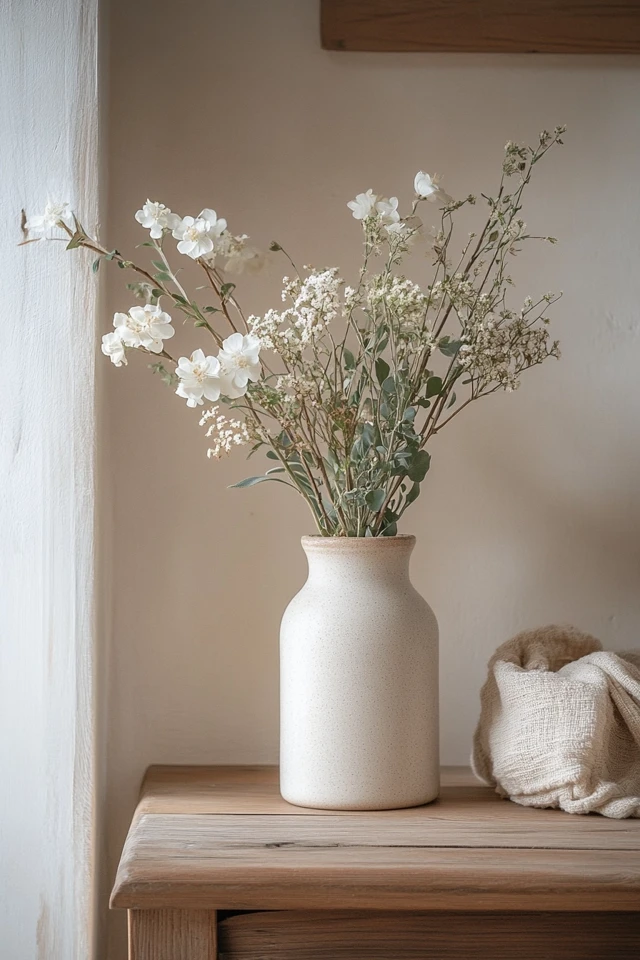
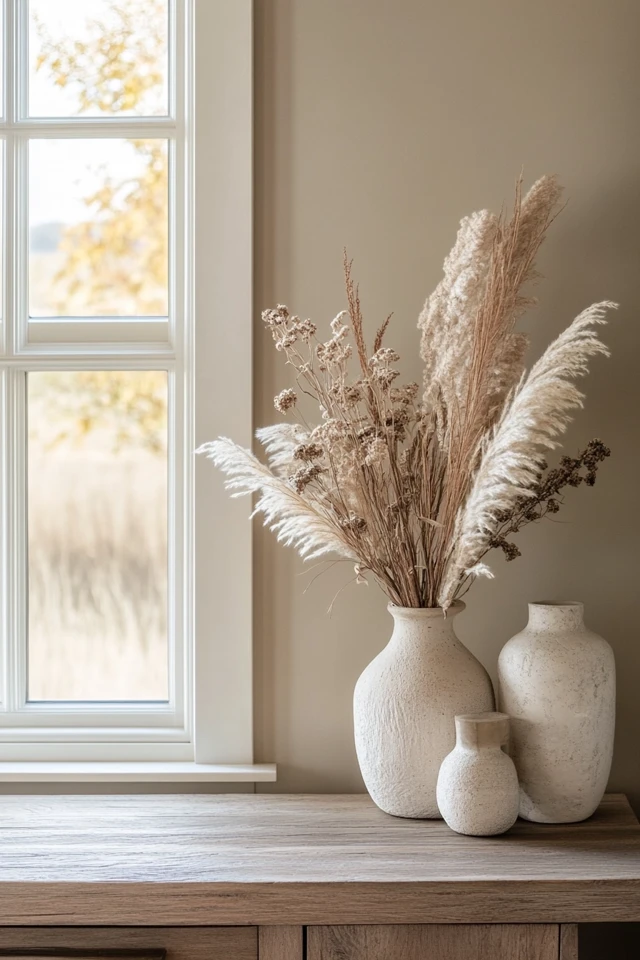
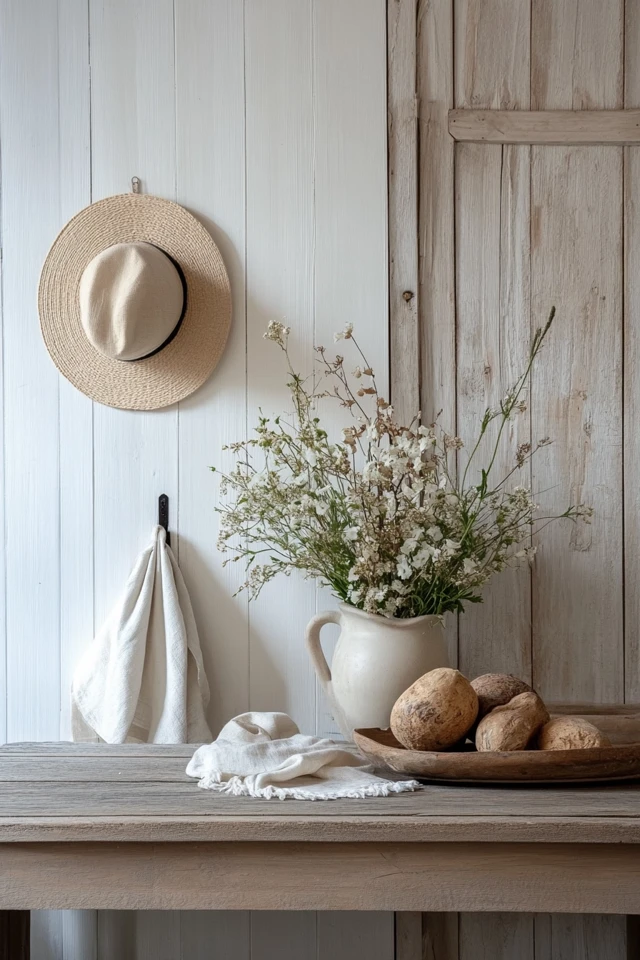
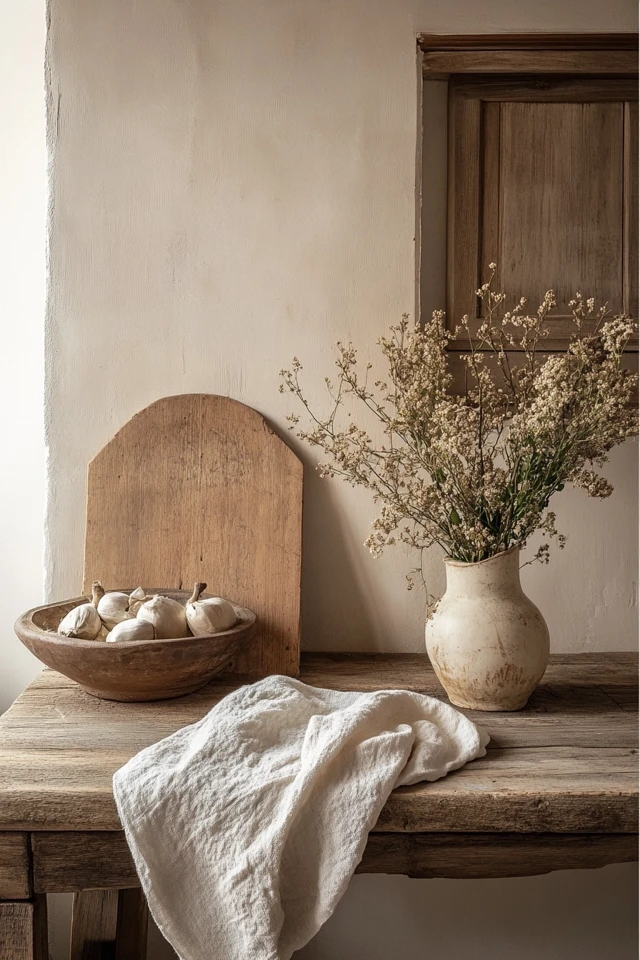
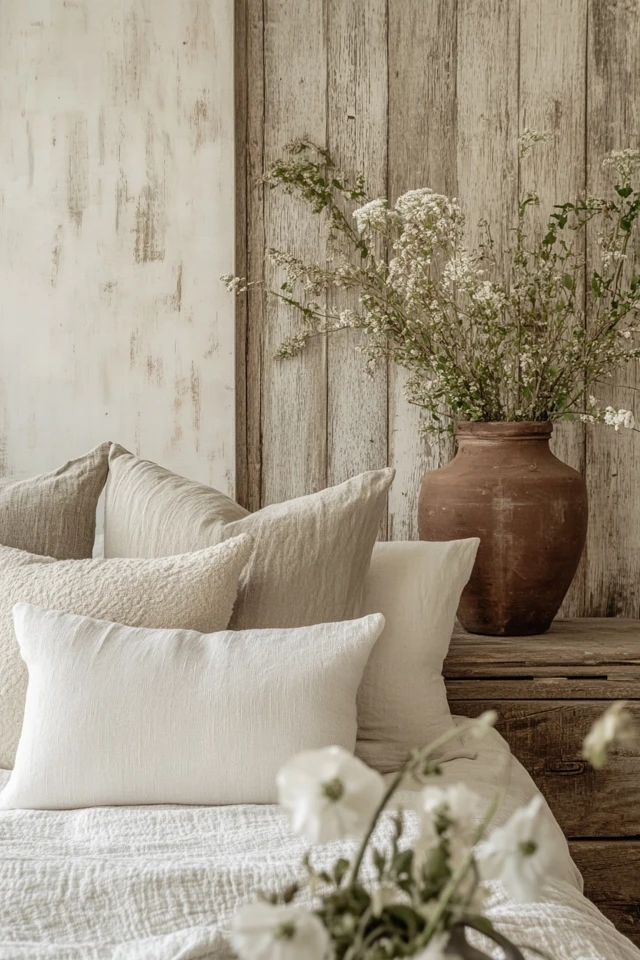
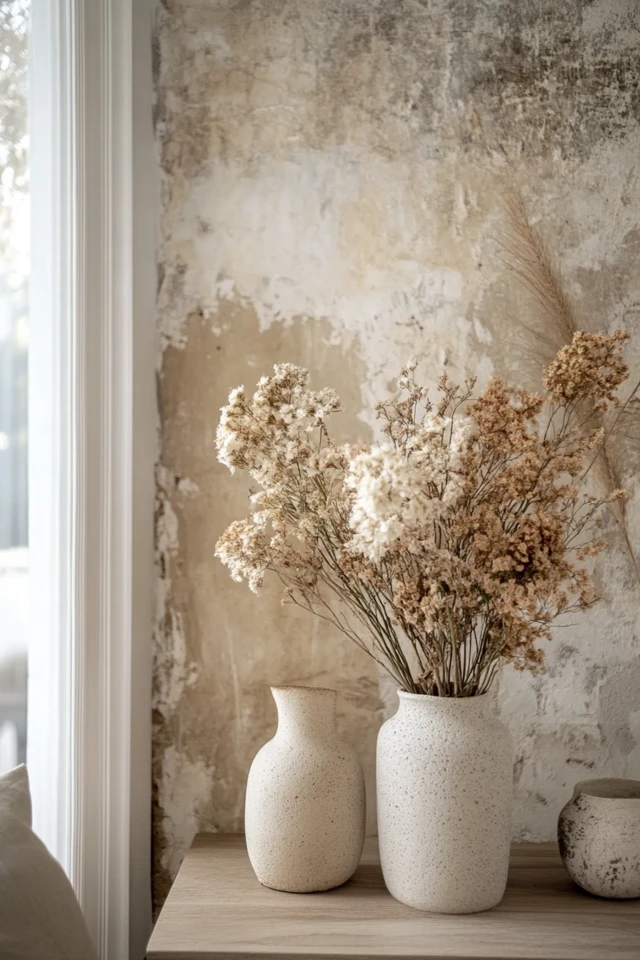
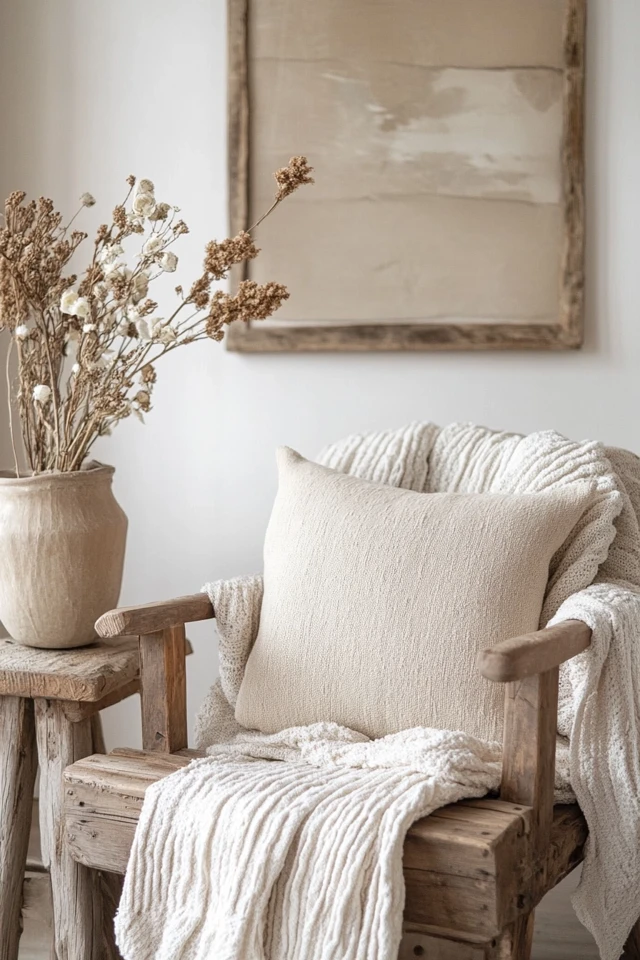
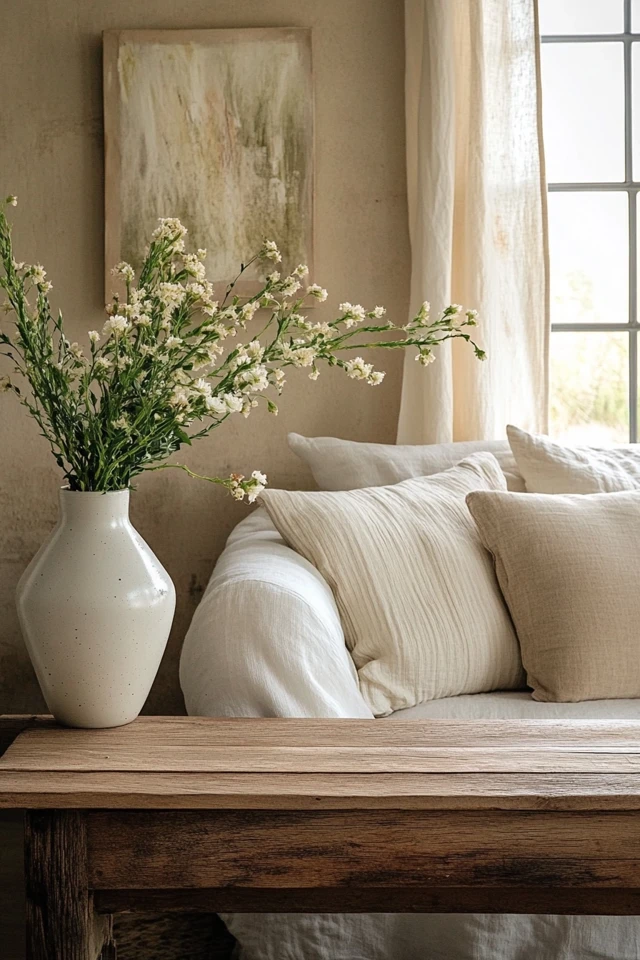
Incorporating Contrast
Contrast is essential for keeping a neutral farmhouse space from feeling too bland. Here are some ways to add contrast without disrupting the serene vibe:
Dark Accents
Introduce dark elements like black light fixtures, picture frames, or hardware. These create visual interest and provide a subtle edge.
Mixed Finishes
Pair matte finishes with shiny ones, like a rustic wooden table with a glossy ceramic vase.
Layering Shades of Neutral
Play with light and dark variations of your chosen palette. For example, pair cream walls with darker taupe furniture.
Practical Tips for Using Neutral Colors
Keep It Balanced
Don’t overdo one shade—balance light and dark tones throughout the room for a cohesive look.
Add Seasonal Decor
Use pillows, throws, or small accents to bring seasonal charm to your neutral base. Think plaid throws in fall or light pastels in spring.
Stick to a Theme
Whether it’s modern farmhouse or rustic chic, keep your overall theme in mind when choosing colors and accessories.
Conclusion
As someone who has worked with countless homeowners to bring their farmhouse dreams to life, I can confidently say that neutral colors are the secret weapon of this timeless style. They create a calm, cohesive backdrop that allows the textures, finishes, and personal touches to shine. Whether you’re starting from scratch or refreshing an existing space, a neutral palette offers endless possibilities for customization.
When I walk into my own living room—decorated in soft whites and beiges with layered textures and vintage accents—I’m reminded of why I love this style so much. It’s cozy, elegant, and endlessly inviting.
So, if you’re ready to transform your home with neutral tones, start by experimenting with different shades, layering textures, and incorporating meaningful accents. Remember, farmhouse décor isn’t about perfection; it’s about creating a space that feels like home.
FAQ
What are the best neutral colors for farmhouse décor?
Warm whites, beiges, taupes, soft grays, and greiges are the best choices for a neutral farmhouse palette. They provide warmth and versatility while complementing rustic elements.
How can I keep a neutral farmhouse room from feeling boring?
Layer textures, incorporate natural materials, and add pops of greenery or subtle contrast with darker accents like black hardware or picture frames.
Can I mix cool and warm neutrals in farmhouse décor?
It’s best to stick to warm neutrals for a cohesive farmhouse look. If you mix in cool tones, use them sparingly and balance them with warm textures and wood elements.
What materials work well with neutral farmhouse colors?
Wood, linen, metal, stone, and natural fibers like jute or sisal pair beautifully with neutral tones. These materials add texture and depth.
How do I add personality to a neutral farmhouse space?
Incorporate vintage finds, personal décor items, and seasonal accents to make the space feel uniquely yours. Use artwork, plants, and layered textiles to add charm and character.

